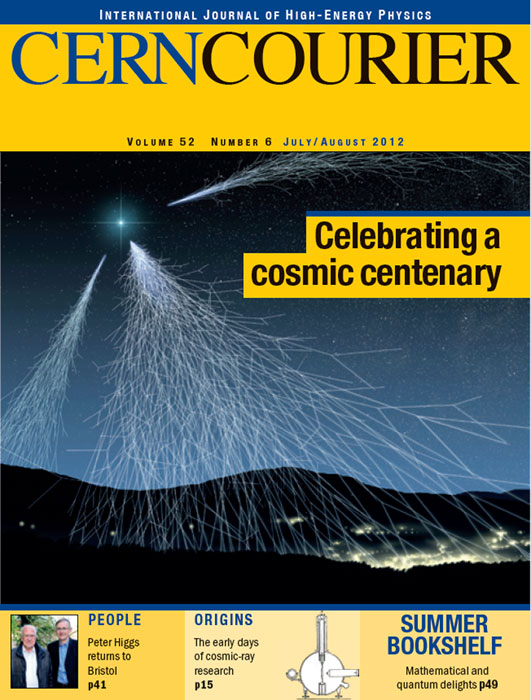
On 7 August 1912, Victor Hess took a now famous balloon flight in which he observed a “clearly perceptible rise in radiation with increasing height” and concluded that “radiation of very high penetrating power enters our atmosphere from above”.
This issue of the CERN Courier marks this discovery of cosmic rays with a look at cosmic-ray research in the past as well as at its future directions.
The experiments – and the results – have always been challenging, as a look at those before Hess shows (Domenico Pacini and the origin of cosmic rays). Nevertheless, they led to new techniques, such as the detection of Cherenkov radiation produced in the atmosphere (The discovery of air-Cherenkov radiation), now fundamental for high-energy gamma-ray astronomy (Cherenkov Telescope Array is set to open new windows). Large-scale experiments detect the highest-energy cosmic rays (Studies of ultra-high-energy cosmic rays look to the future) and have their sights on cosmic neutrinos (A neutrino telescope deep in the Mediterranean Sea) in a quest to discover the cosmic accelerators that surpass the highest energies attained in the laboratory. Meanwhile, the LHC contributes with useful data (LHCf: bringing cosmic collisions down to Earth) and some intriguing results (ALICE looks to the skies).





